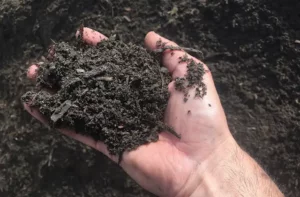No products in the cart.
Lawn care products for growing the best lawn with LawnPorn
Lawn care products for growing the best lawn
Lawnporn is a brand that specialises in lawn care products designed to enhance the health and appearance of lawns. Here’s an overview of some key products they offer, along with their purposes, usage instructions, and general guidelines:
1. Moist:

– Purpose:
Lawn wetting agent designed to improve water penetration and retention in the soil. This helps prevent dry patches by ensuring even water distribution.
– Usage:
Apply Moist during the dry season or when you notice water pooling on the surface. It can be used throughout the year as needed.
– How to Use:
Typically applied via a hose-on applicator or diluted and sprayed using a garden sprayer. It’s recommended to water the lawn immediately after application to activate the product.
2. Charger:

– Purpose:
An iron and manganese supplement aimed at improving the green pigment in grass. It enhances colour and overall lawn health.
– Usage:
Use Charger when your lawn appears dull or if it is suffering from iron deficiency. Generally applied during the growing season.
– How to Use:
Apply using a garden sprayer, following dilution instructions on the product label. Ensure even coverage and avoid application during peaks of heat.
3. Green Light:

– Purpose:
A liquid fertiliser rich in nitrogen to promote vigorous green growth.
– Usage:
Apply during the active growing season when the lawn needs a boost in growth and vibrancy.
– How to Use:
Green Light is usually applied using a garden sprayer or hose-end applicator. Water lightly afterwards unless specified otherwise on the label.
4. Launch:

– Purpose:
Promotes root development and establishes strong grass growth, especially beneficial when planting new seeds or after overseeding.
– Usage:
Ideal for use at the start of the growing season or when establishing new turf.
– How to Use:
Dilute as per instructions and apply evenly across the area. Water in well to aid the product’s absorption.
5. Root Builder:

– Purpose:
Encourages root growth and soil health, enhancing drought tolerance and nutrient uptake.
– Usage:
Suitable for use during the growing season, particularly if your lawn has suffered stress or poor growth.
– How to Use:
Apply using a sprayer, ensuring good soil contact. Follow application rates as indicated and water the lawn after application.
6. Four Seasons Fertiliser

– Purpose:
A balanced granulated fertilizer designed to provide nutrients throughout the year for consistent lawn care.
– Usage:
Can be applied during any season but is especially useful to sustain lawns through seasonal changes.
– How to Use:
Distribute evenly with a spreader to ensure consistent nutrient coverage. Follow with adequate watering to help dissolve and integrate the fertilizer into the soil.
For best results, always follow the specific application instructions provided on each product’s label and consider environmental conditions like weather and lawn type before application. Regular follow-up and observation will help maintain a healthy, attractive lawn.
More Lawn Care programs can be viewed on https://www.lawnpornonline.com/programs






















